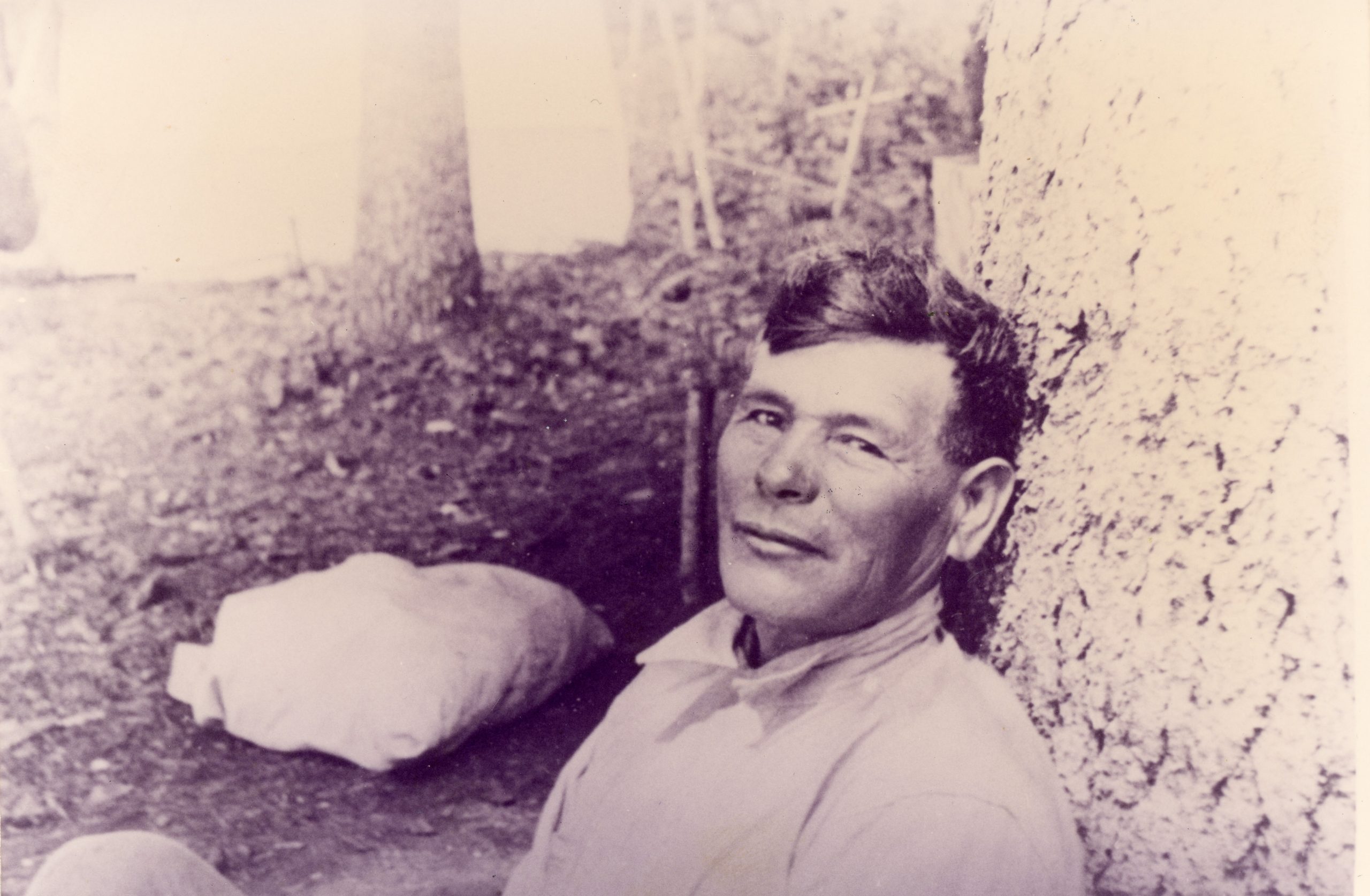Journey into the land and waters of Kespukwitk (Southwest Nova Scotia) as you explore the life and legacy of Samuel (Sam) Freeman Glode. Through immersive environments, evocative soundscapes, and hands-on activities, visitors are invited to deepen their understanding of Mi’kmaw ways of knowing through the practice of ‘seeing’ and ‘hearing.’
The exhibition Wi’k+palu’k Sam Glodeo’q ta’n wetapeksitaq: Honouring the Belonging of Sam Glode follows Sam’s remarkable journey — from his early life in Kespukwitk, where he learned Mi’kmaw teachings and honed his skills as an outdoorsman, to his service on the battlefields of the First World War, where his experience on the land became an asset to Canada’s war efforts.
Born in 1878, Sam lived a life of adventure and discovery before enlisting in the fall of 1915 at the age of 37. Before the War, he had travelled across Canada, spent time in Newfoundland and New Brunswick, and even ventured as far as Alaska by train in 1909. His extensive travels and deep understanding of the land and waterways prepared him well for the challenges of war, where he quickly rose in rank to Corporal by 1917.
Guided by his own words from interviews, visitors will see how Sam’s knowledge and skills as a Mi’kmaw guide made him an exceptional tunneller and engineer, earning him the Distinguished Conduct Medal for bravery and leadership.
The exhibition also explores Sam’s return home to a rapidly changing landscape shaped by industrial development and colonial impacts. Visitors will learn how Mi’kmaw families, including Sam’s descendants, have worked for generations to protect sacred places, uphold treaty rights, raise the visibility of women within their communities, and carry forward cultural knowledge in the face of colonial aggression, treaty denial, and environmental change.
“Sam Glode’s story is one of vision, courage, and deep connection to Mi’kma’kik,” said Tim Bernard, Executive Director of the Mi’kmawey Debert Cultural Centre. “Long before the War, Sam had lived and travelled widely, developing the skills and insight that later made him invaluable on the battlefield. His lived experience as a Mi’kmaw guide and woodsman was his greatest strength — a way of knowing the land and people that served him well in war and in life.”
“This exhibition is the result of deep collaboration, trust, and shared vision,” said Caroline Dromaguet, President and CEO of the Canadian Museum of History. “Working alongside the Mi’kmawey Debert Cultural Centre and the Purdy Family — Sam Glode’s descendants — has been a profound honour. Together, we’ve created a space where Indigenous voices lead the storytelling, and where reconciliation is not just spoken but practiced through meaningful partnership.”
Sam’s legacy of land stewardship and treaty advocacy lives on through his family and Mi’kmaw communities, who continue to protect, reclaim and celebrate Kespukwitk today. Visitors are encouraged to engage in meaningful ways — seeing, hearing and feeling the stories while deepening their understanding of Mi’kmaw worldviews and enduring values.
This exhibition was co-created through a collaborative process with the Mi’kmawey Debert Cultural Centre and the Purdy Family.
Wi’k+palu’k Sam Glodeo’q ta’n wetapeksitaq: Honouring the Belonging of Sam Glode opens on November 7, 2025, and runs until November 29, 2026.
Photo : Sam Glode
Courtesy of Bev and Brian Purdy
